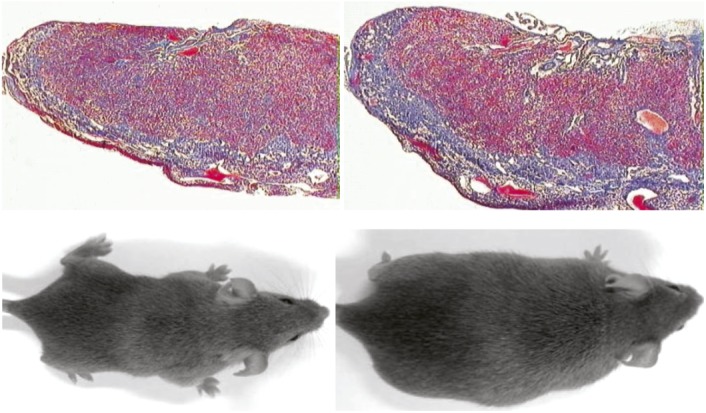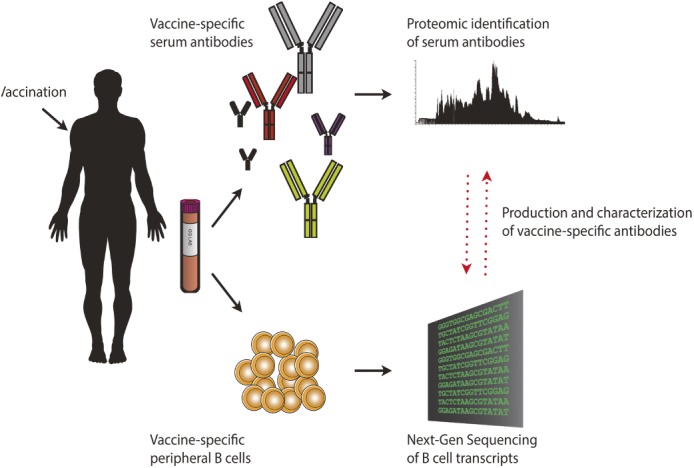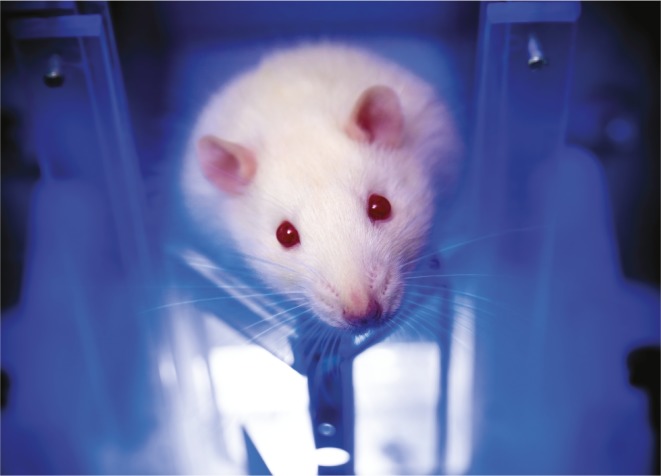Portable bioassay for protein detection
Increasingly, researchers discover protein biomarkers that can be used for early disease detection. However, a low-cost, small-footprint technology that can sensitively detect proteins in a healthcare setting remains elusive. Janine Mok et al. (pp. 2110–2115) designed and tested a digital microfluidic platform to detect protein biomarkers. The platform integrates microfluidic technology with electrical impedance sensing and uses a two-chamber architecture to physically separate the capture/reaction and detection steps. By using simple electronics, the authors have developed this platform to be easily translated into a portable handheld device that can be adapted to assay different types of proteomic biomarkers. The authors tested the utility and sensitivity of their platform by assaying protein abundance, using the human cytokine IL-6, and protein activity, using Abelson tyrosine kinase. Using less than 5 μl of sample, the authors assayed IL-6 abundance from concentrations as low as 50 pM, an order of magnitude lower than that detectable by traditional tests. In addition, the authors detected Abelson tyrosine kinase activity in samples containing 100 pM of kinase. According to the authors, the platform is more cost-effective than standard optical detection methods and does not compromise sensitivity. — B.A.
Role of seminal fluid in offspring metabolic health

Seminal fluid and offspring metabolic health. Normal placental development and progeny weight in the presence of seminal fluid during conception (Left). Placental hypertrophy and obese offspring in the absence of seminal fluid (Right).
Seminal fluid, produced by seminal vesicle glands, promotes sperm survival and function in the female reproductive tract, alters the female immune response to accommodate sperm and the zygote, and influences fetal metabolic processes. To uncover the precise effects of seminal fluid on the postnatal metabolic health of progeny, John Bromfield et al. (pp. 2200–2205) surgically removed the seminal vesicles of mice, and analyzed the outcome on an array of reproductive indicators. The authors report that pregnancies sired by mice without seminal vesicles were marked by 37% fewer viable implantation sites, 8% heavier, thus less efficient, placentas, and lower pregnancy rates, compared with pregnancies sired by mice with intact seminal vesicles. Further, male—but not female—progeny of mice without seminal vesicles showed a 72% increase in the absolute mass of central adipose tissue 14 weeks after birth, compared with the progeny of wild-type mice. The increased adiposity was accompanied by an altered metabolic profile, including increases in plasma metabolic hormones, insulin resistance, and systolic blood pressure, all of which are hallmarks of metabolic syndrome. Embryo transfer experiments suggested that the metabolic changes were linked to the effects of seminalfluid on the female reproductive tract during conception, a link bolstered by the finding that the absence of seminal plasma was associated with a drop in embryo growth-promoting factors and a rise in a cell death-inducing protein in the oviduct. According to the authors, the findings might help uncover a developmental basis for the variable occurrence of metabolic syndrome among people, given that strong genetic determinants of the condition remain elusive. — P.N.
How vaccines protect against pathogens

Proteomic analyses and DNA sequencing reveal properties of vaccine-induced antibodies.
Most vaccines protect against infectious diseases by stimulating the long-term production of immune system proteins called antibodies. But little is known about the identities of vaccine-induced antibodies, or how exactly how the antibodies neutralize pathogens. Jason Lavinder et al. (pp. 2259–2264) examined the composition and features of antibodies elicited by tetanus booster vaccination in two healthy individuals by performing high-resolution proteomic analyses of antibodies in the blood in addition to next-generation sequencing of antibody-producing white blood cells known as B cells. Nine months after the booster immunization, three specific types of antibodies accounted for more than 40% of the total antibody response to the vaccination, and less than 5% of B cells were capable of producing long-lasting antibodies detected in the blood. The findings suggest that a small fraction of B cells give rise to a small number of vaccine-specific antibodies that are largely responsible for long-term immunity. Moreover, structural models revealed how antibody binding to a tetanus toxin fragment used in the vaccine may prevent the bacterial toxin from entering host cells, offering a plausible explanation for how the tetanus vaccine confers protection. According to the authors, analysis of the composition and characteristics of vaccine-induced antibodies may improve both vaccine design and evaluation. — J.W.
Molecular effects of altered sleep timing
Circadian clocks regulate the daily cycles of human bodies as we transition from day to night and from wakefulness to sleep. But disruption of the timing of sleep due to factors such as shift work or jet lag can cause physiological and health effects. To assess how altering the timing of the sleep–wake cycle can affect rhythms of gene transcription, Simon Archer et al. (pp. E682–E691) placed 22 participants on a 28-hour day schedule with low light during waking periods, delaying the sleep–wake cycle by 4 hours each day until sleep was scheduled during the middle of the day. The authors collected blood samples to measure the participants’ melatonin rhythm, driven by the brain’s central clock, as well as rhythms of expression of genes. The authors found a 6-fold reduction in the number of genes that displayed a circadian rhythm, including regulators associated with transcription and translation, during disruption of sleep timing. The timing of the melatonin rhythm was not affected by the delay of sleep timing, revealing which genes may be regulated by sleep–wake cycles and which may be regulated by central clocks. The results suggest that sleep–wake cycles affect the circadian rhythm of gene transcription, and that mistimed sleep affects the circadian organization of the human transcriptome, according to the authors. — P.G.
Tactile working memory in rats

A rat compares sequential vibrations delivered to its whiskers. Image courtesy of Fabrizio Manzino and Marco Gigante (SISSA Tactile Perception and Learning Lab, Trieste, Italy).
Rodents are valuable animal models to explore the neural basis of perception and cognition. But rodents’ experimental potential for neurobiology has not been fully explored, in part because of a lack of appropriate procedures to train the animals. Arash Fassihi et al. (pp. 2331–2336) used an ecologically relevant approach to show that rats perform similarly to humans at tasks involving working memory, or storing and manipulating sensory information over short time periods. Taking advantage of the high sensitivity of rodents’ whiskers to tactile stimulation, which helps the animals navigate and find food, the authors trained 11 rats to compare the amplitude of different vibrations that were sequentially delivered to the whiskers. In a similar experiment, 44 human participants compared the amplitude of sequential vibrations applied to the fingertip. The authors report that the rats and humans were similarly proficient at comparing two vibrations that were separated by up to 8 seconds. According to the authors, the findings reveal the ability of rats to store and manipulate sensory information over short time periods, setting the stage for studies of the neural basis of working memory. — J.W.
Tracking particles through pig lungs to study airway disease

An in vivo assay to track individual particles moving through pig lungs.
Known as mucociliary transport (MCT), the coordinated beating of cilia propels mucus out of the lungs, providing an innate defense mechanism that removes noxious material and microorganisms. Although some airway diseases such as asthma, chronic bronchitis, and cystic fibrosis exhibit abnormal MCT, currently available assays and mouse models have hindered research into the role of MCT at the onset of disease. Mark Hoegger et al. (pp. 2355–2360) developed a novel in vivo assay of MCT in newborn pigs, which share key physiological and anatomical features with humans. The method uses X-ray multidetector-row–computed tomography to achieve high spatial and temporal resolution, an advantage that the authors demonstrated by tracking the movement of individual particles in the large airways of newborn pigs to reveal that particles preferentially travel up the ventral airway surface. In addition, the authors documented heterogeneity in the transport rates of individual particles, suggesting that MCT likely relies on mucus properties and not on homogeneous mucus blankets. The assay’s enhanced data granularity may help researchers better understand host defense mechanisms in airway disease, according to the authors. — T.J.


